All about spaniels
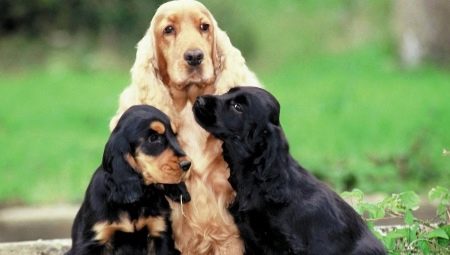
The Spaniel is a very spectacular breed of long-haired dogs that belongs to the hunting group. Today spaniels are for the most part companions, they get along well with a person, become a real loyal friend to him. For these purposes, the spaniel is almost perfect.

Breeding history
Unfortunately, information about the origin of the breed has been lost, and opinions about the first spaniels vary. In the documents of the XVI century there are already official references to this breed. Despite the fact that they belong to Spain, the dogs gained real popularity in Britain. In the same century, 5 main varieties of the breed were described, in the 19th century, the first exhibition of these dogs was held and an official kennel club was organized... From this period of time, serious work began on improving the breed, exterior, qualities of dogs, as well as breeding new varieties of them.
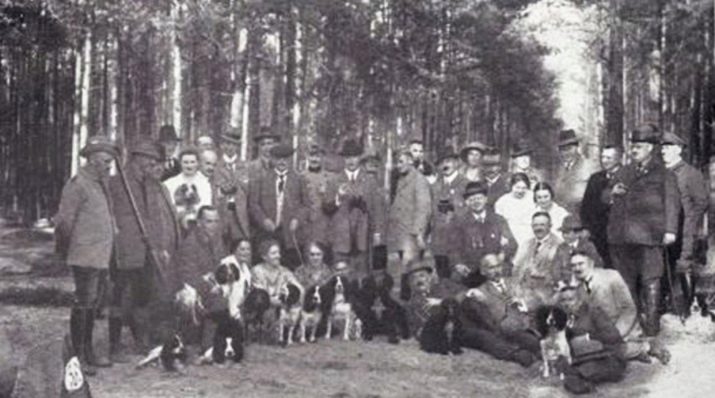
Specific traits
Spaniel dogs belong to the hunters who brought game. The main character traits of the spaniel:
- activity, energy;
- endurance;
- quick wits;
- perfectly developed scent;
- ability to track;
- friendliness;
- independence, love of freedom;
- loyalty and devotion;
- perfectly amenable to training, obey the owner.
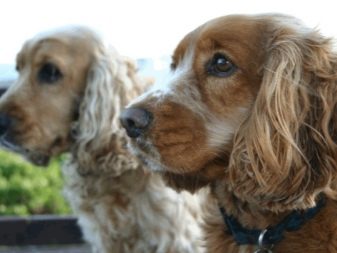
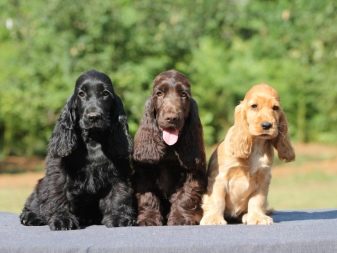
External characteristics of the breed:
- physique of a strong type with well-developed muscles;
- the muzzle looks extremely noble and beautiful;
- luxurious elongated ears, covered with curly hair, their sizes may vary depending on the species;
- medium limbs;
- the growth of dogs is average, depending on the subspecies it varies;
- an adult dog is not too large and oversized, but proportionally folded;
- the color is varied within each subspecies, but the most popular are red, brown, golden, beige, chocolate, black and white.
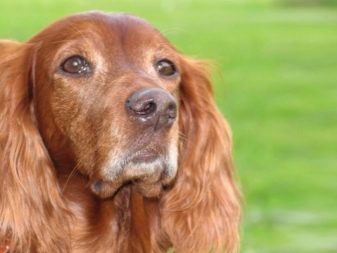
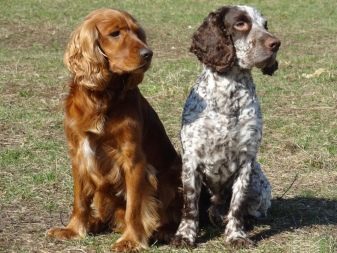
Like every breed, spaniels have their own merits and demerits. The benefits include:
- excellent learning ability, quick wits;
- good nature, non-conflict;
- emotional attachment to a person;
- excellent working qualities;
- get along well with children.
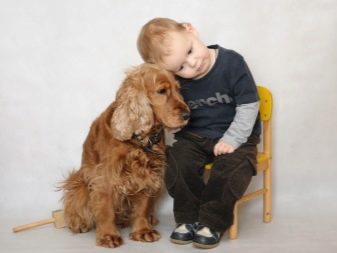
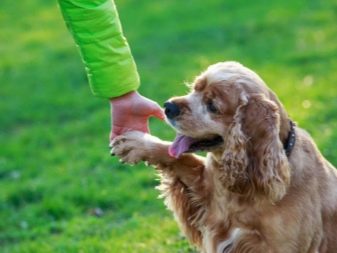
The cons are rather arbitrary, but they should be taken into account:
- very demanding on the conditions in which they are kept;
- periodically too independent and stubborn;
- constantly need a person, attract his attention to themselves.
In any case, the spaniel is not only a good hunter, but also an excellent companion for an active family.
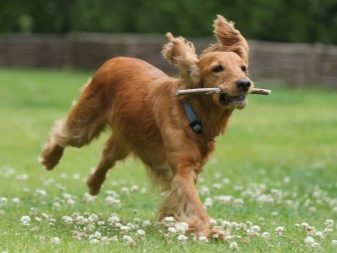
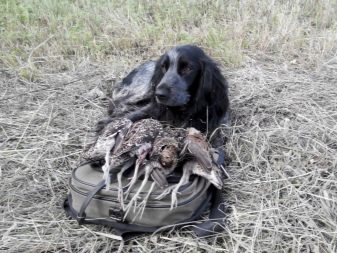
Types and their description
The Federation of Cynologists officially recognizes the following spaniel species included in the Retriever and Spaniel group:
- German;
- Scottish;
- American cocker spaniel;
- English cocker;
- clumber;
- Sussex Spaniel
- field spaniel;
- English Springer.
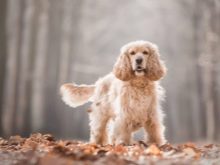
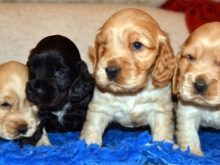
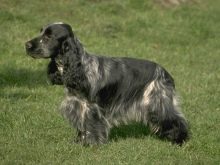
The decorative type includes:
- king charles;
- cavalier king charles.
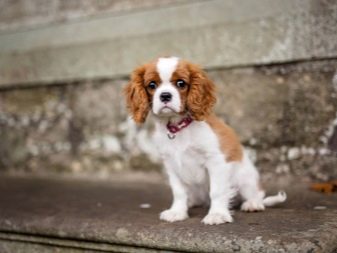
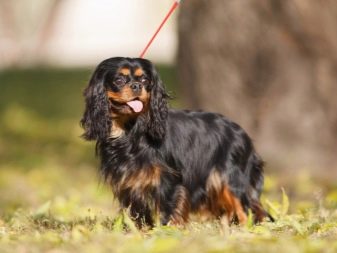
Sometimes there is confusion in the names. Since the breed is of Spanish origin, the spaniel is mistakenly called Spanish. Besides, Pekingese are often referred to as Chinese spaniels, but in fact they belong to a completely different group of breeds. In the twentieth century, a dwarf species was bred from the cocker breed - the mini-spaniel, the smallest of all varieties.
The Russian hunting spaniel is not recognized by the international federation, but is officially registered within the country. This breed has a variety of smooth-haired and curly-haired dogs.
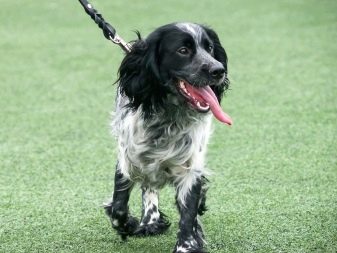
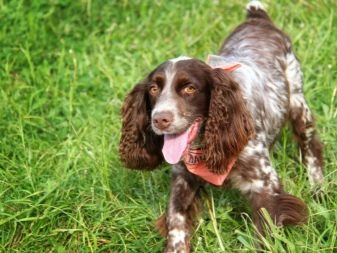
The most beautiful and popular species of spaniels.
German, or Wachtelhund
German breeders bred it.
This breed is not too large, the height of an adult dog is up to 54 cm, body weight is up to 25 kg.
The fold is elongated, the limbs are medium. The build is strong, the muzzle is long, long-haired, the coat is of a thick type. The color can be either brown or brown with piebald. Red tide is allowed. Both suits may include the presence of white hairs, sometimes as the dominant background. The nature of these dogs is quite friendly, they easily get used to new conditions, non-aggressive. Hunting qualities are well developed, they are persistent in their work, hardy.
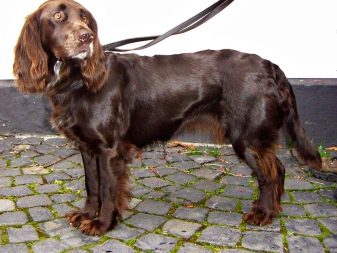
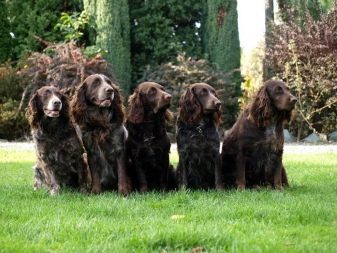
American cocker
This breed is very small in size: height - up to 38 cm, body weight - up to 13 kg. Despite its size, the dog has a very strong build. The neck is elongated, the head is proportional. The coat is long, but moderately silky, the head is short-haired. Curly representatives are discarded. The legs are straight in front, the hind legs are curved. The colors of this breed are variable: black with and without tan, monochromatic from red to fawn, mixed, two-colored. This breed is active, peaceful, affectionate, gets along well with children.
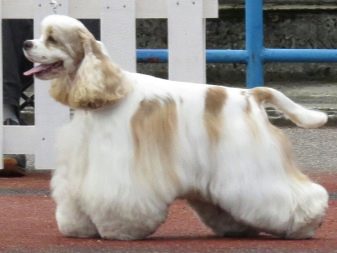

English cocker
The size of the breed is average, the height of individuals varies from 38 to 41 kg, depending on gender. Body weight - up to 15 kg. The physique is well-muscled, well-proportioned, and the limbs and jaws are strong. Ears hang down to eye level. Silky wool not wavy, feathering on the paws. As for the suit, its options can be different: solid black, chocolate, golden, with tan, spotted, two- and three-color, speckled... By nature, this dog is very optimistic, cheerful, energetic, active. Their intelligence is very highly developed, emotionally labile... Excellent companions and hunters.
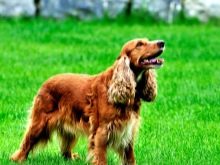
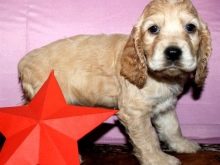
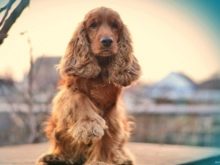
Clumber
Quite dimensional, strong and massive dog, its body weight reaches 34 kg. The head is proportional, large, with powerful jaws, the back is elongated. The eyes are amber. The coat of this breed is thick, straight, silky to the touch. Mostly white spotted, orange or lemon colored spots. May be speckled or mottled on the muzzle.They are very independent, freedom-loving in character, quite decisive, silent, flair is excellently developed.
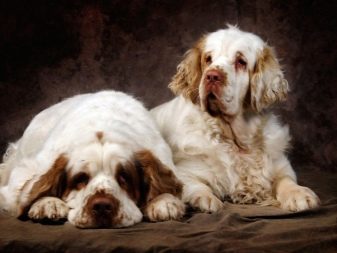
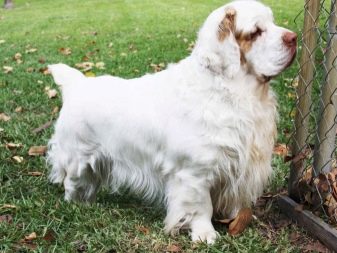
Sussex
The muscles of this breed are strong, well developed, the height of the individuals is up to 41 cm, the weight is up to 23 kg. The head is big, the limbs are powerful, dimensional, the body sways during the run. The coat does not curl, there is quite a lot of it, the undercoat is dense. Brown-golden in color, all others are discarded. Specific traits: energy, activity on walks, relative calmness at home, peacefulness, emotional balance, tact, friendliness. Well trained, but sometimes stubborn.

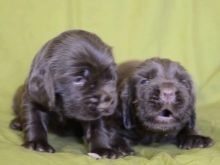
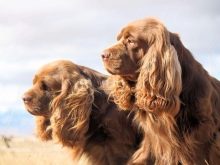
Field
The excellent hunting qualities of the dog make it very valuable in this quality. Body weight - up to 25 kg, height - up to 47 cm. The addition is proportional and noble. It is a strong and hardy breed. She has an aristocratic elongated muzzle, dark eyes, dense, shiny, elongated coat. The following suits are allowed: black, brown, brown with tan, blue roan. By nature, dogs are independent, but sensitive, well trained.
Whimsical in content. Not a very good breed for keeping in an apartment. It is not recommended to have such a dog in the city.
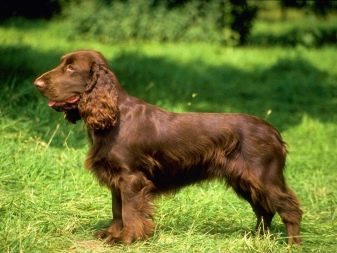

English Springer
One of the most ancient species. The dogs are harmoniously built, the chest is powerful, the limbs are long, straight, strong. The height of the dogs is up to 51 cm, they have a dense type of wool, but soft. Springer suits are brown and white and black and white, tanning is allowed. The disposition of the dogs is friendly, they are very sociable, affectionate, suitable for living in families with children.
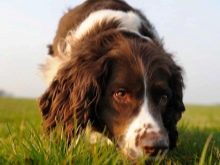
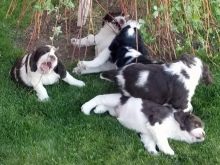
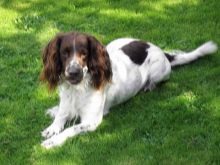
Conditions for keeping
Raising newborn puppies is a tricky process compared to caring for an adult dog. At 1 and 2 months, puppies, as a rule, are already under the care of breeders. Before bringing your puppy home, make sure everything is ready for his arrival. First of all, give him a place - not dark, not next to heating appliances. The kitchen, bathroom, doorways, corridor are excluded. It is best to prepare a bedding for the puppy with removable pillowcases that are periodically washed..
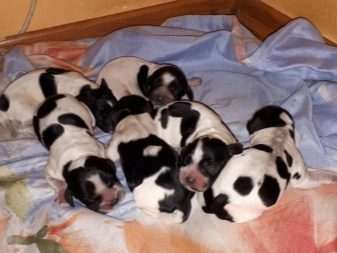
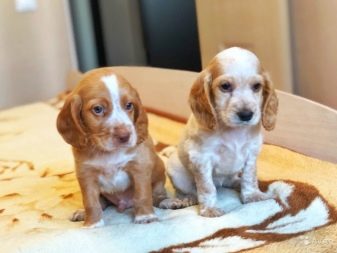
From the first days, the puppy must be taught to sleep in its place, it cannot be tied. Immediately wean the dog from jumping onto chairs, sofas, beds. The puppy should not be allowed something that will not later be allowed for an adult dog.
Remove from the area of his reach anything that can harm the dog, or that which can be damaged by itself: wires, antennas, small and glass objects, medicines, chemicals, houseplants.
A bowl for food and drink, a collar, a muzzle and a leash should be prepared in advance. For decorative breeds, it is recommended to purchase clothes, a hat for the cold season. The optimal age for buying a puppy is about 10 weeks.
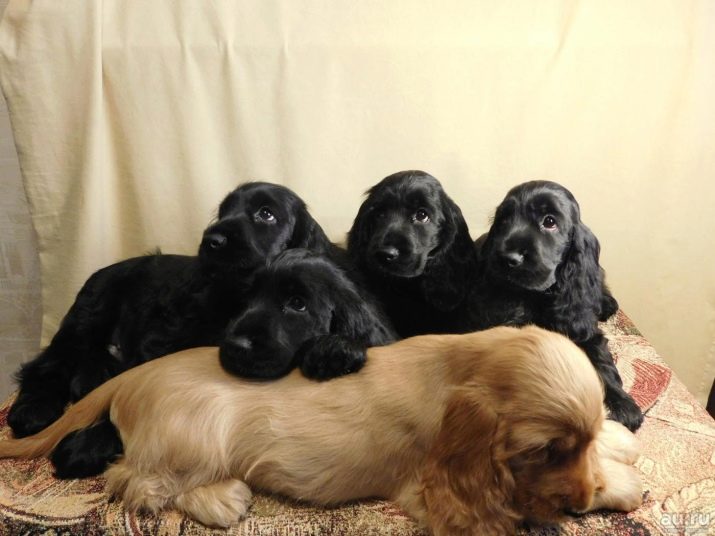
Spaniels can be kept not only in the apartment, but also in the yard, especially those species that need a lot of freedom of movement. Dog handlers believe that the best place for a spaniel to live is a private house. But in the winter season, it is better for the dog to be not in the yard, but in the house. If you start a dog with the intention of keeping it in the yard, build a summer enclosure and kennel. It is better not to allow free movement on the site, fencing the dog from contact with other domestic animals: birds, goats, and so on.
When keeping a dog in an apartment, remember that she needs to ensure maximum physical activity, otherwise she will lose her working skills, pamper, start to get bored and ruin things.
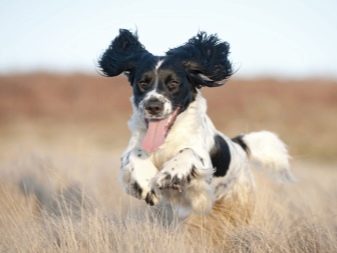
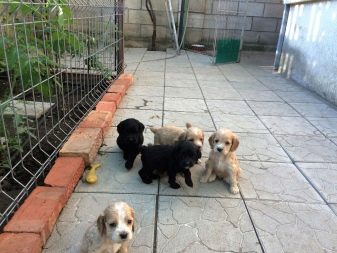
Spaniels are extremely popular in Russia. They often turn up not as hunting dogs, but as companions, decorative pets. Caring for them is quite difficult, you need to carry out many regular procedures. For a long time, docking their tail was considered necessary, but today the controversy of dog breeders about this does not subside. If the dog is not planned to be used as a hunting dog, there is no need for docking - this is the opinion of many experts.
If you dock an animal, then you need to do this as early as possible, at the age of 2-3 weeks.
Spectacular spaniel coat requires special care: it needs to be trimmed, combed, washed. If you take care of it incorrectly, it will quickly take on an unkempt look, lose its shine, silkiness. You should purchase special combs, hair care products. It is important to carry out the treatment against parasites and fleas in time, as dogs comb themselves and damage the skin.

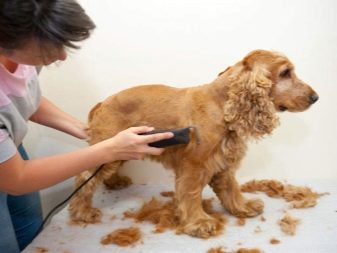
Spaniels are washed about once a month, not more often, otherwise the natural protective layer of the skin can be disturbed. The dog is bathed in warm water using special shampoos, balms, conditioners for long-haired dogs. You can use powder shampoos, cleansing sprays, if washing is not part of your plans or if you need to remove a local stain.
Spaniels are very fond of water, they swim well, so in the warm season you can arrange similar events for them in open water.
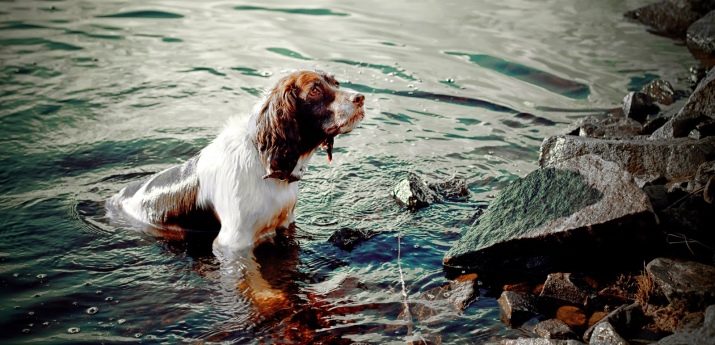
Also very it is important to comb the wool with high quality, remove dust, dandruff, dirt from it every day. Usually dogs are taught to brush daily from the first days of life. If this is not done, tangles and tangles will often appear on the coat. It is necessary to use special slickers, massage combs, zocombs for combing out, koltunovye to get rid of tangles that cannot be combed.
Spaniels are not very patient and do not like to stand in one place for a long time, which is why it is so important that the puppy is accustomed to this procedure.
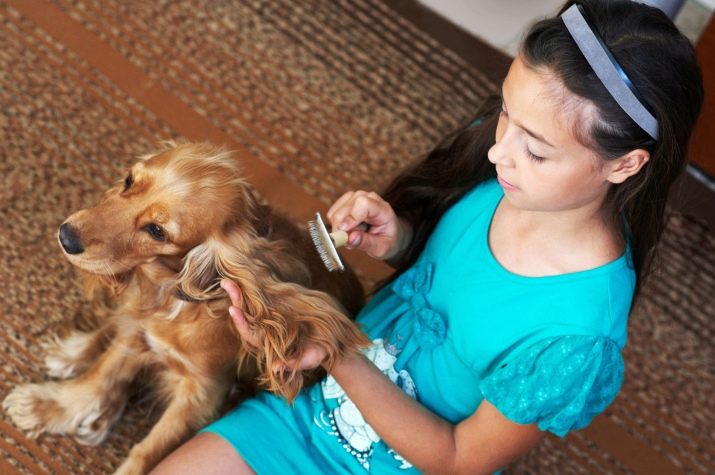
Some spaniels are cut to a standard, such as the American Cocker. Haircuts can be hygienic and full. The latter are performed in salons, while a partial one can be done independently. Be sure to cut the wool on the paws, otherwise everything that the animal comes into contact with will cling to them.
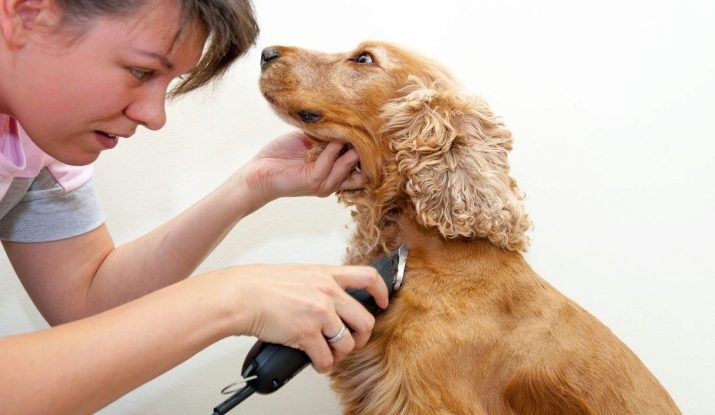
It is very important to regularly clean your pet's ears and monitor their condition. Check your ears for mites every time you walk. In addition, sulfur and dirt constantly accumulate in them, which are cleaned out by processing with cotton pads dipped in vegetable oil, peroxide or boric alcohol. In addition to ticks, you need to pay attention to redness, inflammation, pus, and an unpleasant odor. If such symptoms are found, the animal should be shown to a doctor.
Examine the dog's eyes daily; there may be pustules in the corners, discharge that must be removed with a paper towel or gauze. Lacrimal lines and stains are removed using special products that can be purchased at the pet store. It is also important to watch your teeth. You should brush them regularly and purchase fluoride-laden bones for your dog. You can treat the oral cavity with special sprays.
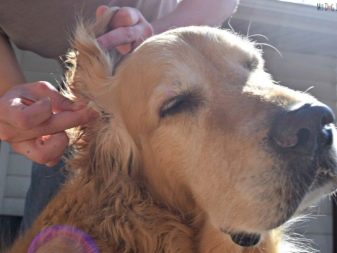
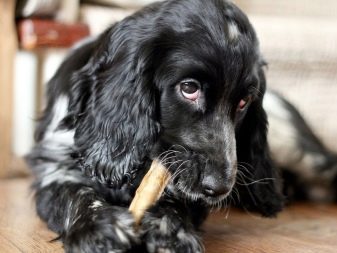
Paws and claws require special care. The pads should be inspected for damage and treated, if any. In addition, various small objects can get stuck in the paws. After a walk in the cold and mud, the paws are washed with warm water and dried. Nails are usually erased naturally, however, if necessary, they are cut with a nail clipper. As a rule, this procedure is performed once a month.
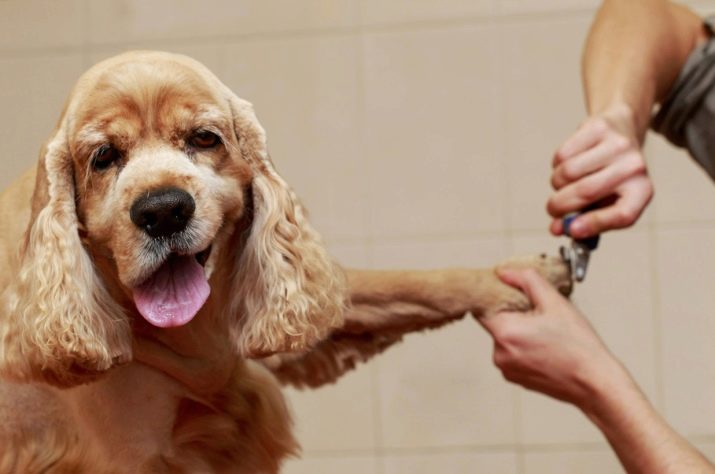
Daily long walks and physical activity are important for the health of the spaniel. Start socializing from an early age, the puppy should not be afraid of people and other animals. Avoid contact even with purebred dogs prior to vaccination. Timely vaccinations, antiparasitic treatment, regular visits to the veterinarian will allow the dog to develop correctly, be healthy and feel good.
Despite their good immunity, spaniels can get sick, especially if they are not properly cared for. Ears require special care, as they are closed and not ventilated, so inflammation can occur there. Alarming symptoms - the dog shakes his head, scratches his ears. In this case, you should consult a doctor, since otitis media is a common disease and it can be caused by various reasons.

Often spaniels are faced with eye diseases, especially if the owners do not take care of them or do it wrong. Spaniels are also prone to allergies, the main symptom of which is scabies. Another symptom that should not be overlooked is the onset of shortness of breath. This may indicate that the dog has heart problems. Unfortunately, this kind of disease without timely assistance is fatal.
Decorative spaniels are at high risk of developing cardiovascular problems. Symptoms requiring immediate medical examination:
- the mucous membrane has acquired a bluish tint;
- fainting:
- swelling;
- cough, shortness of breath, especially during exertion;
- lethargy, loss of appetite, weight loss.
Of course, not every cough is a sign of heart disease, it can be a cold, but doctor's supervision is necessary in any case.

What to feed?
A dog's diet should be nutritious and balanced, this is the basis of his health and well-being. There are two types of food for spaniels - organic foods and prepared foods. The latter are more convenient, they already contain all the necessary substances, vitamins, in addition, they eliminate the cooking process. If the owner makes a choice in favor of natural feeding, it is necessary to balance proteins, fats, carbohydrates and supplement the food with vitamin and mineral complexes.
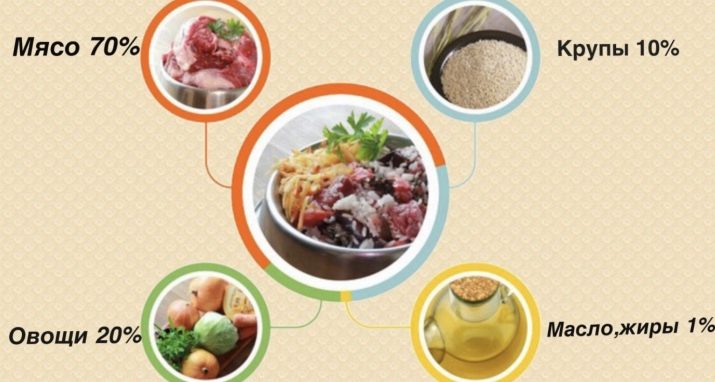
The basis of the diet should be protein: meat, offal, fish, eggs, dairy products. Raw meat should be present in every meal and make up at least 50% of the total diet. Until the puppy is 10 weeks old, the meat products are crushed. The meat should be lean, fresh: beef, chicken, turkey, veal and rabbit are welcome. With care, give boiled peeled fish. Sometimes the dog is given a raw egg mixed with other food. Dairy products are given in the form of kefir, yogurt, cottage cheese, cheese.
Fats are also important for the dog's health, but in moderation: sour cream, butter, vegetable oils. Carbohydrates in a dog's diet are present in the form of cereals, rusks, vegetables and fruits.
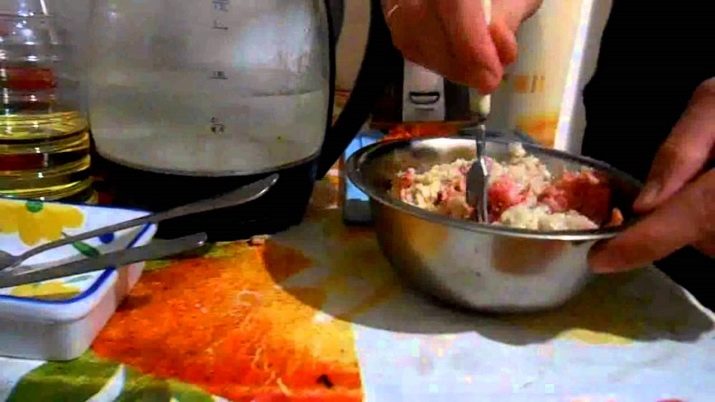
Spaniels are categorically contraindicated:
- food from the common table;
- fatty meats, such as pork;
- sweet, pastries, pastries;
- pasta;
- legumes;
- grape;
- citrus
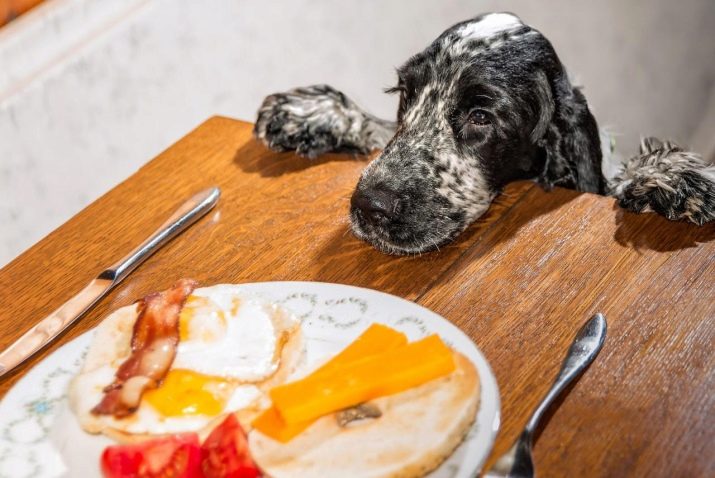
Drinking water should be constantly available to the dog.
Feeding an adult dog is two times a day, puppies are fed 4 to 6 times a day. When making a choice in favor of ready-made feeds, you must choose a premium class from trusted manufacturers. It is not worth buying feed by weight - as a rule, it is impossible to determine freshness and quality from them.
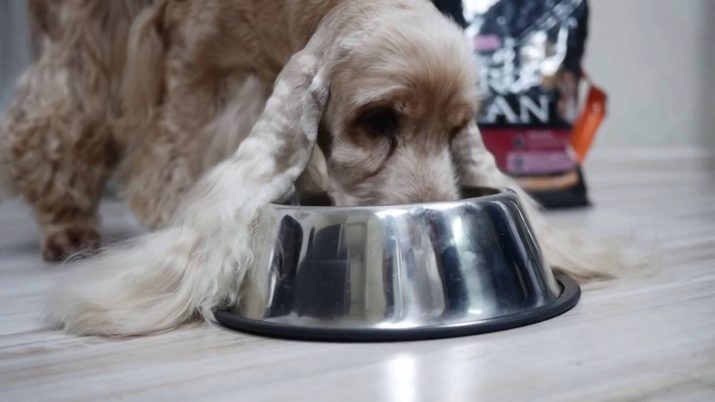
The nuances of training and education
It is necessary to raise a spaniel from the first day it appears in your home. Delaying training until adulthood is a mistake, the puppy must be accustomed to what awaits him in adulthood. It is very important to immediately start accustoming the dog to its name, to the toilet, to the leash and collar, to sleep in its place.
Spaniels love to rummage through garbage and can eat the excrement they find, which is very dangerous for their health. This is a genetic trait. Puppies must be weaned from this action. To do this, the dog must master the commands "no" or "fu", "spit". The dog can be stubborn, so patience is required. The barking of spaniels is very loud and, if neglected, is often wasted.
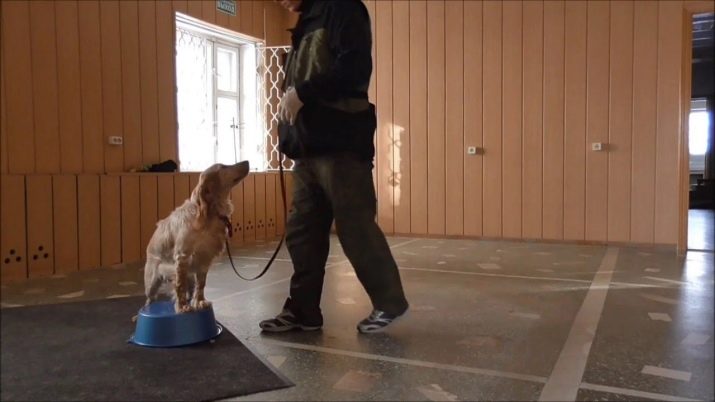
A trained spaniel understands the connection between action and effect.
Basic teaching methods:
- encouragement;
- punishment;
- their combination.
According to experts, a combination of punishment and reward works best, but it is necessary to proceed from the personality of the dog.Someone is perfectly affected by the reward system, when for the performed action or command the dog receives praise, affection or a treat. The punishment should be in the form of a reprimand, but in no case in the form of assault or shouting. Otherwise, you can raise a frightened, aggressive, stubborn animal. If you choose the combined method, then the share of rewards should be greater than punishments. It is very important to react to the misconduct immediately, otherwise the meaning of the punishment is lost.
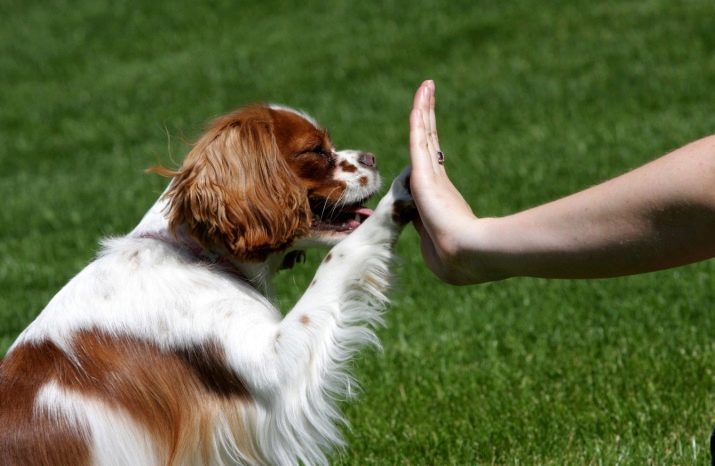
Socialization is a very important factor in raising a spaniel. It will allow you to form an adequate attitude of the dog towards family members, strangers, and other animals. If animals grow up with an early age, they usually do not have problems. However, you should never leave your spaniel and birds, hamsters, rats, pigs unattended. Do not forget that this is a hunter and his nature may prevail, even if the dog is accustomed to this or that animal. The spaniel does not have particularly good contact with cats, except for those cases when they grew up together, and reptiles.
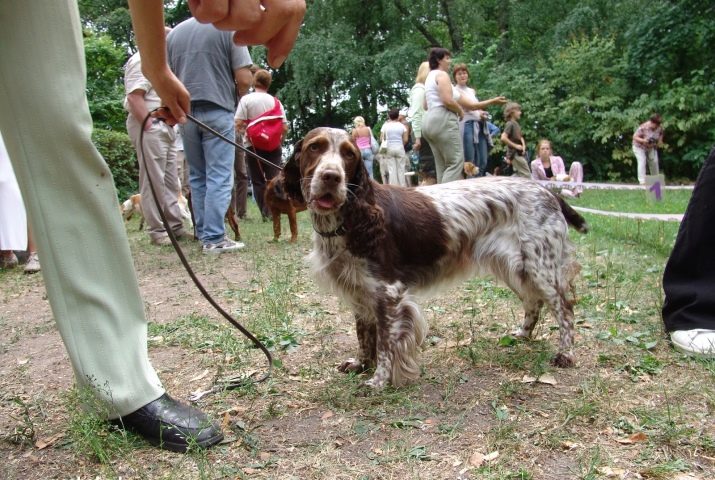
Choosing a nickname
The appearance of this dog is very pretty, beautiful, so the name must correspond to it. You will have to call out to the dog very often, so make sure that the name does not annoy you, it is beautiful and euphonic, easy to pronounce. In addition, it is good if you know what this or that nickname means, because in a foreign language many strange words sound quite elegant.
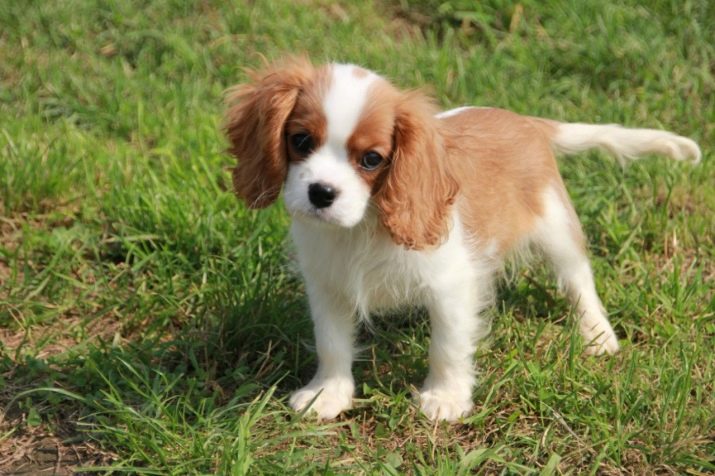
Most often, foreign names are chosen. Boys are willingly called:
- Oscar;
- Lucas;
- Max;
- Colin;
- Archie;
- Luke;
- Diego;
- Patrick;
- Freddie;
- Kurt;
- Ricky;
- Charlie;
- Martin;
- Hector;
- Kevin;
- Jeri.
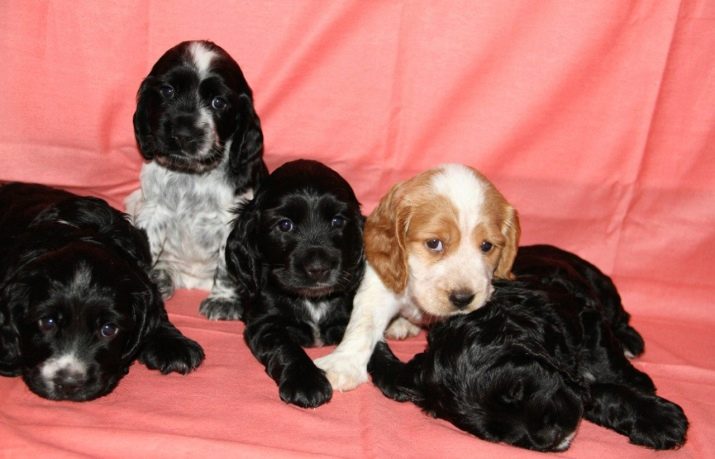
Names after favorite literary and film characters, writers, philosophers, artists, athletes are very popular:
- Rembrandt;
- Confucius;
- Elvis;
- Lanister;
- Conan;
- Schumacher;
- Tyrion;
- Tyson;
- Stark;
- Hugo;
- Rocky;
- Ozzy;
- Sherlock;
- Rhett;
- Dickens;
- Jamie;
- Rambo;
- Frodo;
- Palahniuk.
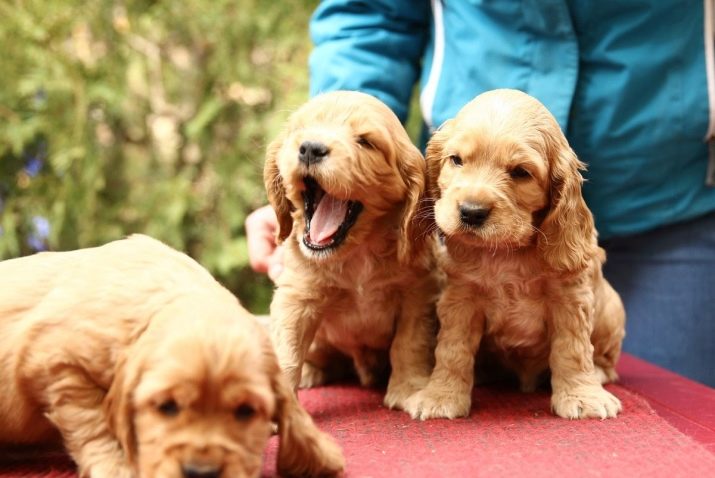
Often dogs are called associative suits:
- Golden;
- Black;
- Woland.
A beautiful and unusual name will attract the attention of others, but you should not chase originality at the expense of pronunciation comfort.
Choosing a name for a girl is no less difficult. Often in this matter, they rely on the appearance of the dog.
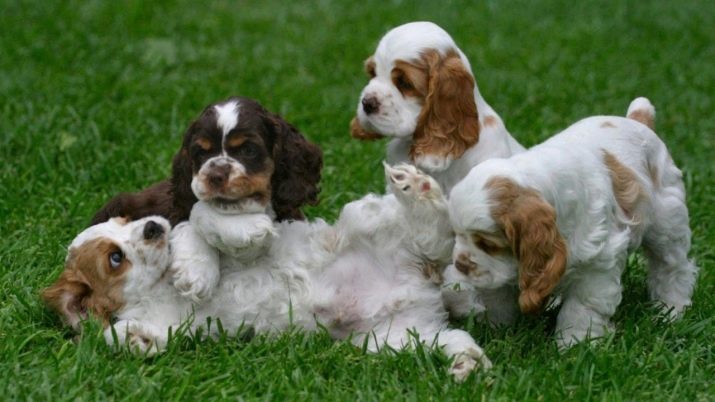
Also popular are foreign names, literary heroines, movie stars. List of the most popular names:
- Scarlett;
- Jolie;
- Marilyn;
- Grace;
- Pixie;
- Tina;
- Laura;
- Jennis;
- Elina;
- Irma;
- Sarah;
- Irene;
- Khaleesi;
- Mary;
- Carmen;
- Lily;
- Ariel;
- Daphne;
- Rosie;
- Cleo;
- Sabina;
- Belle;
- Christie;
- Chloe;
- Rosina;
- Cersei;
- Toffee;
- Fox;
- Margot;
- Bagheera;
- Panther.
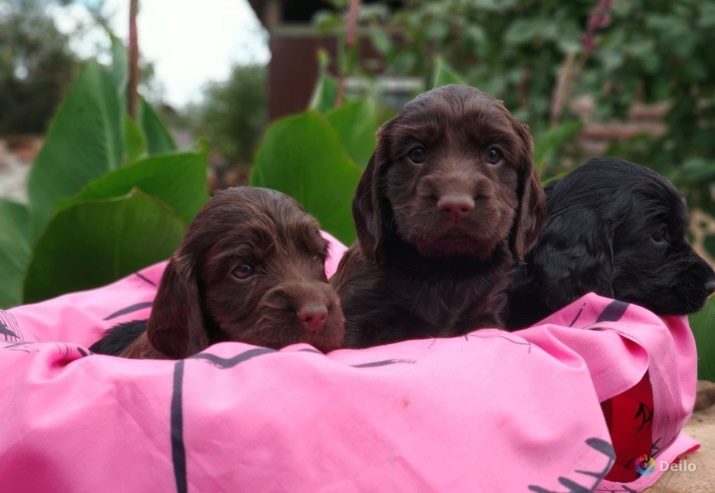
Owner reviews of this type of dog are mostly positive. Regardless of the subspecies, they are characterized as quick-witted, inquisitive, energetic, active, very friendly. They get along well in families with children, are very attached to the owners. They are trained very well - by the year the spaniel, with regular training, knows all the main commands. Among the minuses, there is a high need for the presence of a person; alone, dogs are bored. They love garbage, can fall out in the mud, and can be impatient with other animals. The spaniel must be weaned from barking for no reason.
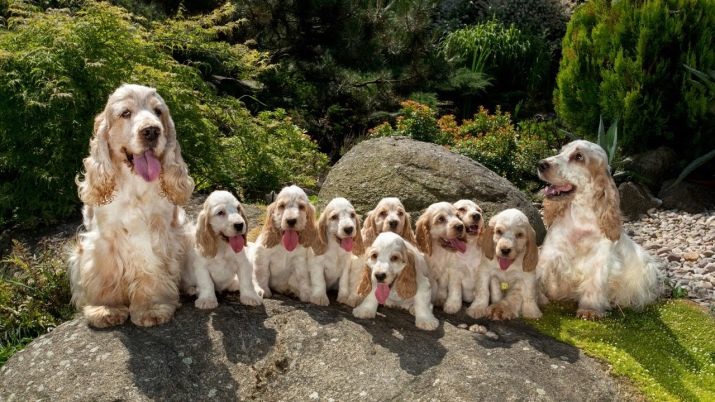
In the next video, you will learn what to buy when a spaniel puppy appears from the house.







































I have a Cavalier King Charles Spaniel, their name is Toshka)
I also want to take an English Cocker Spaniel.